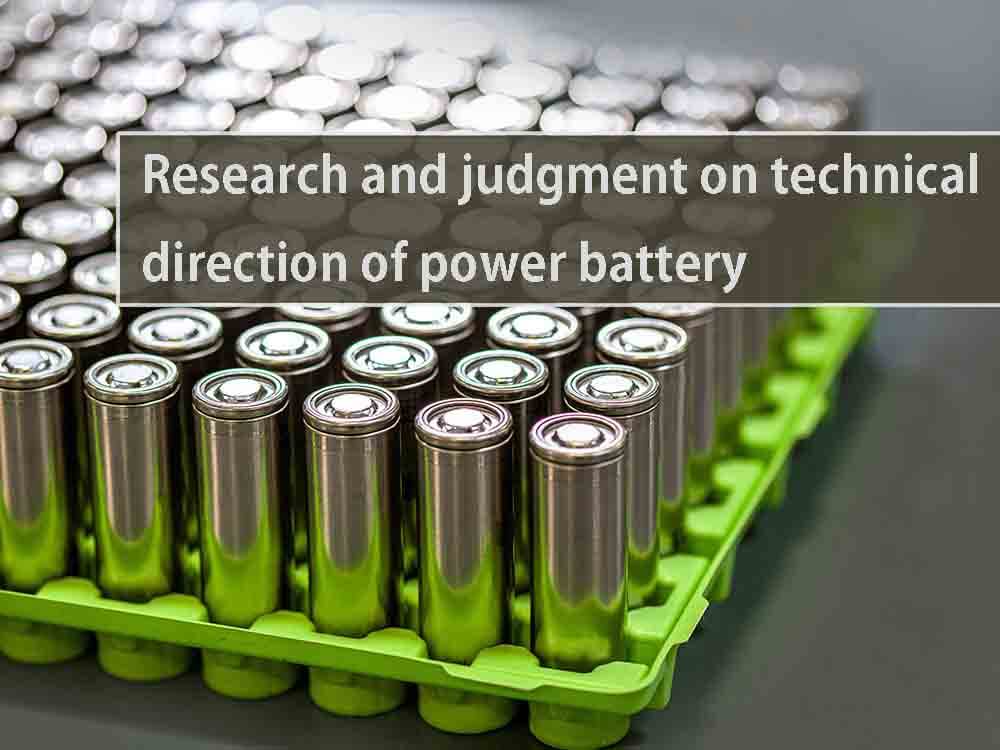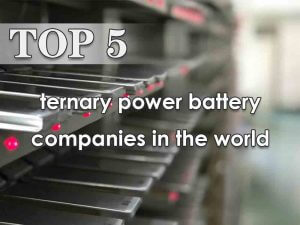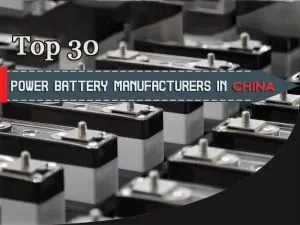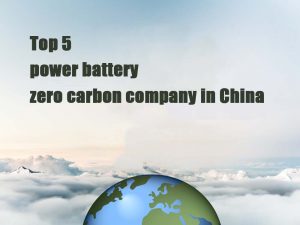Research and judgment on technical direction of power battery
At the level of material system innovation, cobalt free batteries, fast charging batteries, sodium ion batteries, lithium sulfur batteries, solid state batteries, high manganese iron lithium batteries, etc. are constantly innovating. At the same time, the diversification of power battery technology is also driving the complexity and innovation of equipment technology.
Behind the technical innovation of power battery, it is driven by the global energy reform and the upgrading of new energy industry, and it is also the key for battery enterprises to participate in the market competition.
As the cornerstone component of new energy vehicles, power battery technology innovation breakthrough is also closely related to the industrial upgrading space. Based on in-depth insight into the industry, the next generation power battery technology can be summarized into six major directions: cobalt free, 4C fast charging, short knife battery, lamination technology, pre lithium lithium supplement and predictability.
Macroscopically, the underlying logic of these six directions comes from the laws of industrial development. It refers to the vertical integration of “mineral resources – key materials – battery materials – battery equipment – cascade recovery – resource regeneration”; Diversified expansion in horizontal coordination links such as charging and changing infrastructure, intelligent manufacturing, battery banking, etc.
It serves the whole peripheral ecosystem, including financial services, industrial park operation, capital innovation, etc. On the micro level, these six directions directly address the problems that need to be solved immediately, including resource bottleneck, energy supplement and security anxiety.
Cobalt free
66% of the global cobalt output comes from Congo (Kinshasa), and China’s cobalt reserves account for only about 1% of the global reserves. The scarcity of cobalt resources seriously threatens the safety of the power battery supply chain. At the same time, cobalt plays an important role in the cost of cathode materials.
Taking the ternary 523 battery system as an example, the material cost of cobalt accounts for 20%, and its price fluctuation will directly affect the cell cost. Therefore, the “cobalt removal” of power battery has become a global industry consensus, and the ternary system with high nickel and low cobalt is a hot technology.
But broadly speaking, as long as the cathode material of lithium battery does not contain cobalt element, it can be called cobalt free battery. In addition to the low cobalt ternary battery, lithium iron phosphate, lithium manganese iron phosphate, etc. are also included in the cobalt free system.
In the future distribution of lithium battery products, the market share of “big cobalt free” batteries will exceed 70%, covering A00-BC class, 300-700 km endurance passenger cars, light power vehicles and commercial energy storage.
Ultra fast charging
In the first half of this year, the production and sales of new energy vehicles were booming, and the market penetration rate had reached 21.6%. It was a general trend to deploy super fast charging. The battery fast charging based on 800V high voltage battery platform has become the focus of the industry layout.
With 800V models coming into the market in succession, 2022 will become the first year of mass production of 800V models. However, one of the challenges of ultrafast charging is that the charging infrastructure is seriously imperfect. At present, the number of charging posts/stations that can match the ultra fast charging models is far from the demand for establishing an ultra fast charging ecology.
In addition to the constraints of high input costs in the early stage, the construction of overcharge stations depends heavily on the stability of the power grid. The overcharge station suitable for 800V high voltage fast charging needs super capacitor matching, and the strength and speed of capacitor transformation in the power grid directly determine the popularity.
The power consumption peak caused by the overcharge station in the short term requires a large number of efficient cable channels and other supporting facilities, which is a difficult reconstruction project.
Therefore, although battery manufacturers in the industry have launched mass production of faster charging batteries at a higher rate, from the perspective of the economy of the whole vehicle and charging facilities and the stability of public electricity, 4C batteries can achieve a better balance between mileage anxiety and actual equipment.
In the short and medium term, 4C+800V is the best scheme within the affordable range of the public power grid, and can avoid unnecessary thermal management risks.
Core length thinning
If cobalt free is the embodiment of accelerating battery material innovation, long and thin cells are an important direction in the field of battery structure innovation. Long and thin cells can improve space utilization and battery safety by reducing the cell thickness, increasing the cell length, and canceling module design, so that the direct array of cells can act as a structural member in the battery pack.
From the perspective of large-scale production and manufacturing, the biggest problem faced by long and thin electric cores is the yield control and the efficiency of large-scale manufacturing.
Lamination technology
The traditional square battery is generally produced by winding process, but the long and thin cell is prone to wrinkle, deformation and other problems by winding process. The lamination process not only improves the internal utilization rate of the square battery, but also has several performance advantages:
● Higher battery energy density
The utilization rate of winding space is lower than that of lamination, and the lamination can make full use of corner space, so the energy density is higher under the same volume.
● More stable internal structure
Due to the influence of inconsistent internal and external stress at the winding corner, the battery will have wavy deformation, resulting in uneven current distribution and unstable internal structure. The lamination process can keep the battery interface flat.
● Higher safety
The bending of the pole piece at both ends of the winding is easy to cause powder loss and burrs, which may cause internal short circuit of the battery and cause thermal runaway in serious cases. The laminated battery has even stress and higher safety.
● Longer cycle life
The number of lugs of the laminated battery is twice that of the winding, the more the number of lugs, the shorter the electronic transmission distance, and the smaller the resistance, so the internal resistance of the laminated battery can be reduced by 10%+, and the cycle life is longer.
In the production process of six short knife batteries, namely, “homogenizing, coating, rolling, die-cutting, laminating and assembly”, the production efficiency and quality of laminations are crucial to the yield of battery cells.
However, the laminating process has been faced with the shortcomings of low equipment efficiency, high equipment investment, low yield, and great control difficulty. The laminating machine technology has become the key to the permeability growth of the laminating process.
Pre lithium and lithium supplement
Adding lithium to electrode materials through pre lithiation can offset the irreversible lithium loss caused by SEI film and improve the total capacity and energy density of the battery. As the pre filling lithium process is expected to solve the problem of low first coulomb efficiency of silicon carbon anode, it often appears in the technical route of “silicon doped lithium”.
In the complete machine factory, Tesla’s 4680 battery with silicon based negative electrode adopts dry electrode+pre lithiation at the technical level. BYD began to deploy lithium supplement technology in 2004 at the earliest, which has a strong technical reserve.
Battery manufacturers like energy storage battery companies such as Gotion High Tech, EVE and Envision AESC also have a large number of lithium supplement related patents, mainly involving the technical route of anode pre lithiation. Shanshan and COSMX are mainly involved in the technical route of positive pole pre lithiation.
The cathode material manufacturer Dyanonic is currently in the stage of capacity construction, and it is expected that part of the lithium supplement capacity will be mass produced in Q4 this year or Q1 next year.
The positive lithium supplement technology developed by SVOLT in the laboratory has achieved 10000 cycles on the energy storage cell, and plans to challenge 12000 cycles, that is, to achieve the same life as the photovoltaic system.
With the gradual increase of silicon based negative electrodes and the demand for lithium supplement of high-end power/energy storage batteries, pre lithiation may become a major development direction of lithium batteries in the future.
SVOLT introduced the CTR technical solution by combining pre lithium lithium supplement+short knife electric core and adding new cooling and safety technologies. The upgraded energy storage cell is about 325Ah, completely surpassing the mainstream 280Ah energy storage products on the market.
Predictability
From material innovation to structural innovation and manufacturing innovation, the multi technology route of power battery has been continuously upgraded. However, no matter how perfect the technology is in theory, it cannot guarantee the safety of the cell and battery pack 100%.
In this reality, predictability becomes very important. Through early warning algorithm, monitoring+cloud computing can identify potential risks of the battery cell in advance and give early warning. At the same time, online reports can be output on residual value assessment and utilization of space.



























